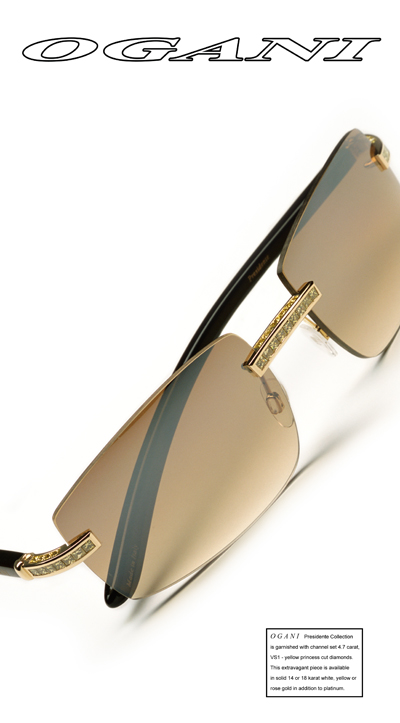Not such a joke, when a month later, we've sold 30 of them, at an average complete eyewear price of $1,500 a pair.
Before you jump to the conclusion that we are a high-fashion eyewear retailer, let me explain. Our practice is an MD-OD partnership, highly medically oriented, with several associated ophthalmic subspecialists. Our patients come to us for medical eye care and high-tech vision correction.
Our eyewear gallery, though attractive, is small, just 600 square feet or so. Karen, our frame buyer, has always made the most of the limited space by carefully selecting frames and lenses that aren't offered anywhere else in our community. She has successfully built our inventory of distinctive frames in the $250 price range. Coupled with superior customer service, this hand-picked inventory has earned us an average revenue-per-eyewear unit (frame revenue + lens revenue) of $439—an increase of 31 percent from 2004 to 2005.
Now we are poised to achieve a much more dramatic increase in 2006, thanks to our strategy to stock, prominently display and effectively present high-end frames.
This is not an entirely new strategy. We have stocked Swarovski frames for some time, and on six or seven occasions, have sold a complete pair for $2,200. We do have affluent demographics here, and some patients are willing to pay top dollar for "the best."
It was Karen's vision that brought the Ogani frames into our gallery. These are rimless, lightweight, flexible frames that can be swapped out with 48 different shapes. The temples and bridges are solid white gold or yellow gold, and the more lavish ones flash with white, yellow or even pink diamonds. The 4.7-carat Ogani frame (white diamonds) is $18,000, in yellow diamonds, it's $21,000, and in pink diamonds (like Jennifer Lopez wears) is $22,000.
Okay, you say, what would make a person pay these kinds of prices? We haven't sold an $18,000 frame yet (although we will be offering a $15,000 frame), but we do have some insight into the sales of $995, $1,295, $2,700 and even $3,300 frames: a lifetime warranty on defects.
 |
| Ogani's Presidente Collection features 4.7-carat, princess cut diamonds and white, yellow or rose gold, as well as platinum. |
That's right, a great warranty. Patients will pay the extra money when they are reassured they can get this frame fixed, no matter how long they've had it. That, and the utter flexibility of swapping out lens shapes as styles or personal tastes change, really appeals to those who prefer to invest in something that will last.
So you may be wondering, how do we differentiate Ogani frames from $250 frames (as nice as they are)? It's fairly simple: They differentiate themselves, from inside a magnificent, 6 x 6 foot octagonal glass display case. The Ogani display commands attention, attracting the wealthy and the not-as-wealthy alike, who have never seen eyewear like this before. When we notice a patient's interest (and it happens every day), we know what to do next:
• We never assume a patient can't afford the eyewear. People find a way to afford things that they value (we do have financing available, although very few patients use it).
• We make the time that's needed to sell this eyewear. The optician showing the high-end frames makes sure another staff person can handle any other needs in the gallery.
• We articulately explain the benefits of this exquisite eyewear (an Ogani rep trained us) as a reflection of personal style.
• Think jewelry for the face, and then take it up a notch. Jewelry, you wear for a special occasion, but eyewear is a personal statement that you make every minute of every day.
• And then the closer: a lifetime warranty on defects.
You may be thinking you could never sell that kind of eyewear in Minnesota, or North Dakota or South Carolina. And I would not disagree. We do have some unusual demographics here in Palm Desert. However, I would like to say one thing to you: Don't knock it until you've tried it.
There's no reason why this strategy would not work in your community. Perhaps you wouldn't choose Ogani, but you can certainly identify a high-end frame line that would make sense. Let's talk for a minute about why you should do so.
Let's say your most expensive frame is $350. That seems a lot more than a $150 frame, but it doesn't really change a patient's perception of the frame. Now let's say your most expensive frame is $800. What does that do to the $150 frame? It makes it look cheap—and perhaps "not good enough" for the quality-driven consumer. Now, he or she will look at your $250 frame in a whole new light! If you are prepared to explain the added benefits of that frame in a compelling way, plus offer an improved product warranty, you will have more takers than you ever imagined possible.
In fact, if you never sell the $800 frame, it doesn't matter. Its purpose is to raise the bar in your eyewear gallery. Patients need to be educated about the possibilities in eyewear … just as they have been educated about the possibilities in personal computers and technology, automobiles, travel, you name it. Once patients understand the value of what you are offering, they will perceive the wisdom of investing in it.





